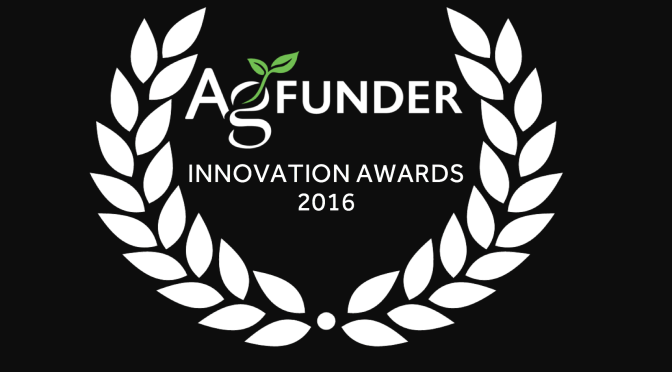
Lessons learned in Biotech Food Innovation
Over our first four classes and 55 startups funded, IndieBio has built up a new class of food companies. We are so honored that AgFunder’s annual survey voted IndieBio one of the Top 3 most valuable’ accelerators in AgTech.
It’s been a lesson for us that biology can have such an impact on food. About a quarter of our portfolio are food and Ag companies. which have many approaches to food but are each highly innovative. Together they have created a new philosophy of how to improve food quality, reduce waste, transparency and achieve eco-sustainability; Molecular Foods.

The impact on life sciences for food up to now has been quiet but pervasive. Nearly everything we eat is checked for quality and nutritional content. The protein content of seafood (which breaks down as it gets old), the gluten and protein content of grain (which varies depending on how its grown and stored), the melting point of fats and dozens of other tests are run on food coming in from producers and wholesalers worldwide. Now verification is becoming an issue — DNA sequencing is showing that the species of one in three fish sold is not as advertised.
Over nearly 60 years of intensive development in making pharmaceuticals, assisting cutting edge R&D, the tried and tested staples of life siences can impact a market like food (and others). Life sciences is allowing for high end quality while scaling to feed us affordably. Producing food while understanding each molecule in it, Molecular Food writes food quality instead of just reading it.
“Molecular Food doesn’t just read food quality, it writes it.”
We’ve funded several approaches to Molecular Food. Also surprising has been that all of the food solutions we’ve funded heretofore are non-GMO and most can be organic/biologique. Here I describe five types of food innovation we have participated in as Molecular Foods to try to
Next-gen plant-based foods
These companies make foods we know and love using ingredients only from plants. Following ambitious companies like Hampton Creek and Impossible Foods that thoroughly produce the foods we want to eat but without expensive animals.
By combining proteins, fats, carbohydrates etc from different sources, foods with the same texture, mouth feel — the same experience — are created. New experiences that cannot be gotten any other way are also emerging.
Plant ingredients are less resource-intensive and have much fewer issues with bio-contaminants like Salmonella and E. coli. Eating plant based foods is healthier overall and that’s why the demand is outpacing the overall market for these foods.
Clean meat
The trillion dollar North American meat product is another target for better transparency and quality. Memphis Meats produces muscle cells directly for meat products, producing the cellular structures that give meat its full satisfying texture. All with a fraction of the resources and cost.
Brewed foods
Geltor and Clara Foods use yeast strains to brew up protein based foods like gelatin and egg whites. Working with them was an amazing experience. Tasting these foods coming out of fermentation like you’d find in a brewery, not only were they the familiar experience you’d experience but the ability to control the quality was a clear advantage. The ingredients are made and ready to use in hours; all of the inputs and the purity coming out are documentable with consistency that you can see. This will cut down on opaque and sometimes global supply chains that make much of our food today.
Understanding of taste, memory, and experience
Later companies include Ava Labs, GEA Enzymes and MiraculeX, which take a fresh look at wine, fats, and non-sugar sweeteners respectively. Each can create the experience of foods. Ava Labs has been creating better and better wines from the molecules that make it up. Among other possibilities they may become a historical repository for vintages which Ava Winery can help recall and reproduce rare tastes that change over time and are eventually lost forever. Later this week GEA Enzymes will present the worlds first fully liquid dark chocolate — an espresso like experience that has the full range of tastes of an exclusive dark chocolate without the dry and crumbly mouth feel.
Along the supply chain from farm to table
We have also worked with AgTech companies that have a strong biotech foundation. EnduraBio has a natural plant extract spray that cut the water consumption of a crop plant in half in a test they did with us. AstronaBio produced a 20 minute test for food pathogens, replacing a 3 day testing cycle. Pure Cultures and Animal Biome are unravelling tangle of the microbiome and producing products that work; a feed supplement that replaces antibiotics and a treatment for severe diarrhea in companion animals respectively.
“Molecular Food” is certainly an idea in progress, but the potential to fix security, waste and consistency in the global supply change has been an exciting realization that will mature in the near future.
Join me for the Future Food-Tech summit in San Francisco March 29-30.
Use the code INDIE300 and get $300 off registration.






